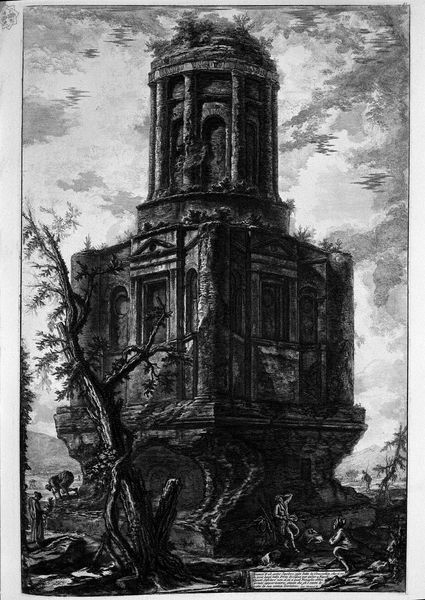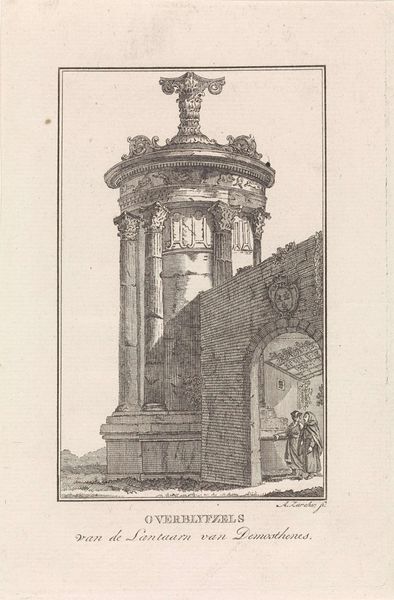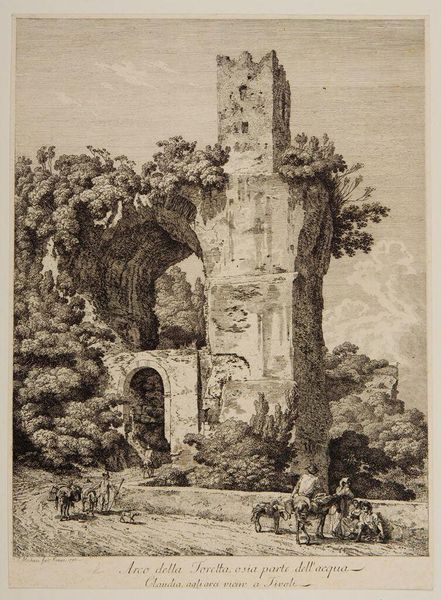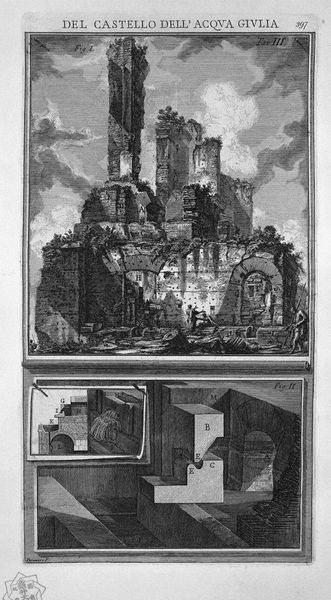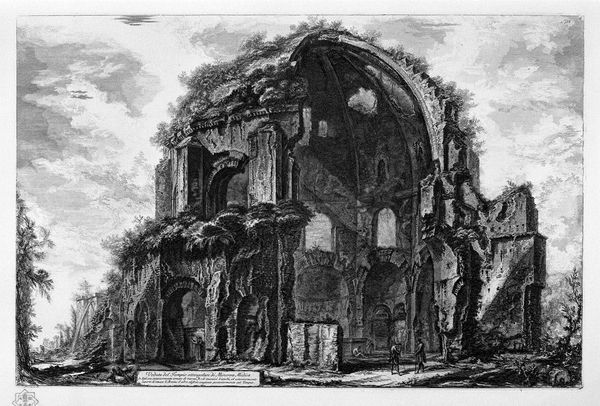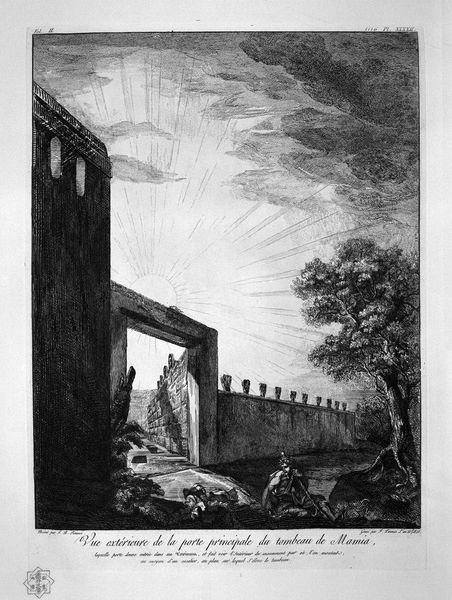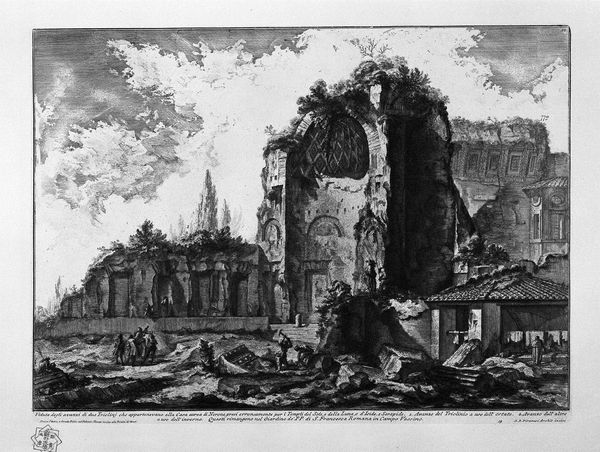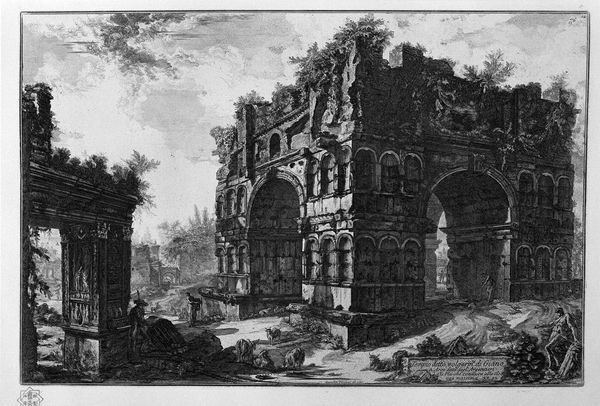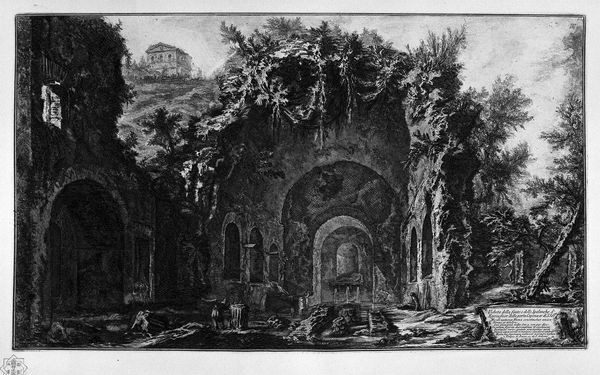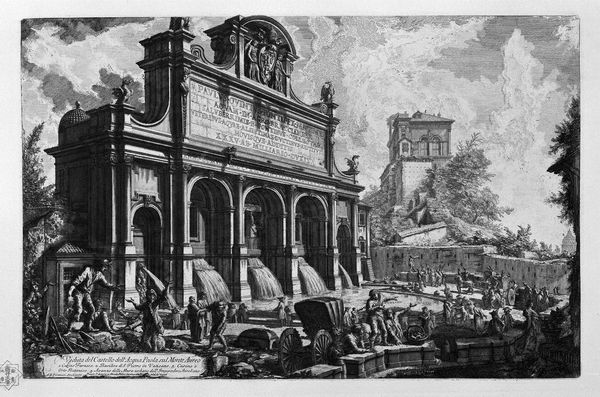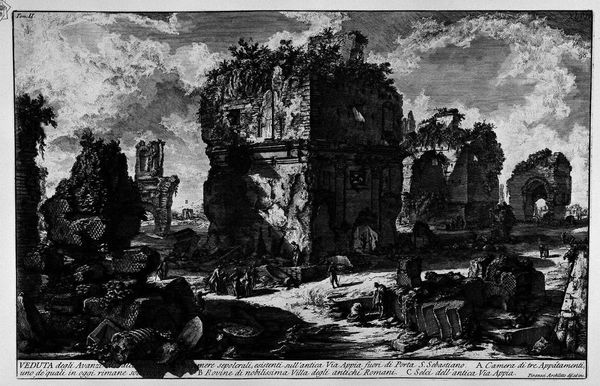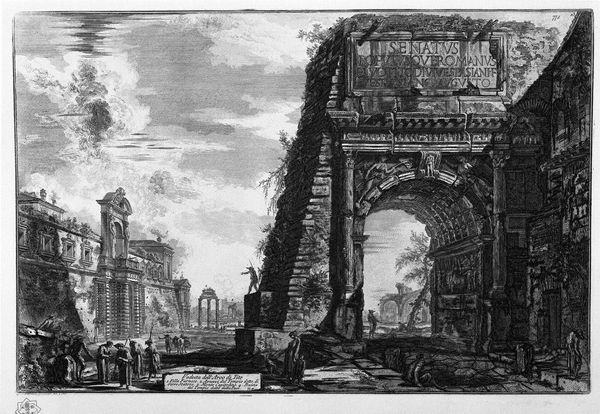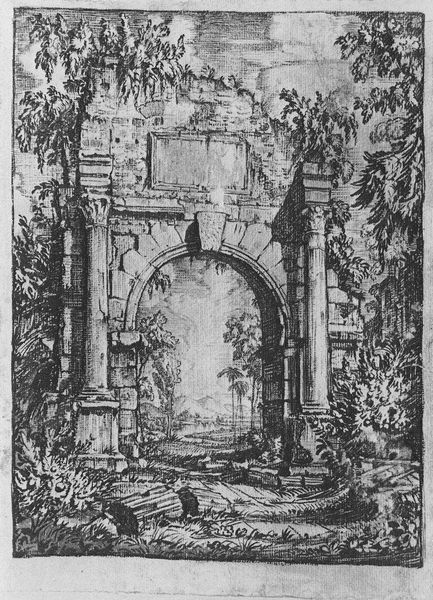
The Roman antiquities, t. 2, Plate XXXIX. Plan and section of the three rooms of the family of Augustus believed burial. 1756
0:00
0:00
drawing, print, engraving, architecture
#
drawing
# print
#
landscape
#
form
#
geometric
#
classicism
#
arch
#
line
#
cityscape
#
history-painting
#
engraving
#
architecture
#
realism
Copyright: Public domain
Curator: This engraving by Giovanni Battista Piranesi, dating from 1756, is titled "The Roman antiquities, t. 2, Plate XXXIX. Plan and section of the three rooms of the family of Augustus believed burial." Editor: It looks so massive, even in print. All those precisely etched lines give the architecture this imposing presence and stark texture. It evokes a sense of awe and ruin simultaneously. Curator: Piranesi was deeply engaged with the theater of power and the political statement inherent in Roman architecture. His prints weren’t just records; they shaped contemporary perceptions of Rome's imperial authority. This plate presents us with a presumed family burial site, raising the stakes of civic identity. Editor: Right, and the very act of producing these detailed engravings becomes a material performance. Consider the sheer labor involved in cutting those lines into the plate, translating this colossal structure into a reproducible object accessible to a broader audience. Did these prints fuel the architectural ambitions of wealthy Europeans back then? Curator: Absolutely. Prints like these circulated among architects, aristocrats, and antiquarians, influencing Neoclassical designs and shaping their grand visions. They carried considerable symbolic and cultural capital. And Piranesi deliberately emphasized scale, didn’t he? Little human figures dwarfed by looming ruins. Editor: Precisely. Those little people really highlight the material investment that built that site: the immense effort involved in quarrying, transporting, and setting each individual block of stone. That labor represents power and extraction. The building's eventual decay becomes a testament to shifting material realities. Curator: It underscores a complex negotiation of power and historical memory through the accessibility of the architectural image. Piranesi presented Rome as a lesson, as a spectacle of history, ready for political co-option, regardless of its ruinous state. Editor: Yes. What really stands out to me is how the artist transformed the ruins into a powerful symbol of wealth extraction and long-faded glory. These heavy materials now remind us of labor lost to time. Curator: It's truly more than just a document. Editor: It is a statement about power and its material trace, etched in lines and stones.
Comments
No comments
Be the first to comment and join the conversation on the ultimate creative platform.
